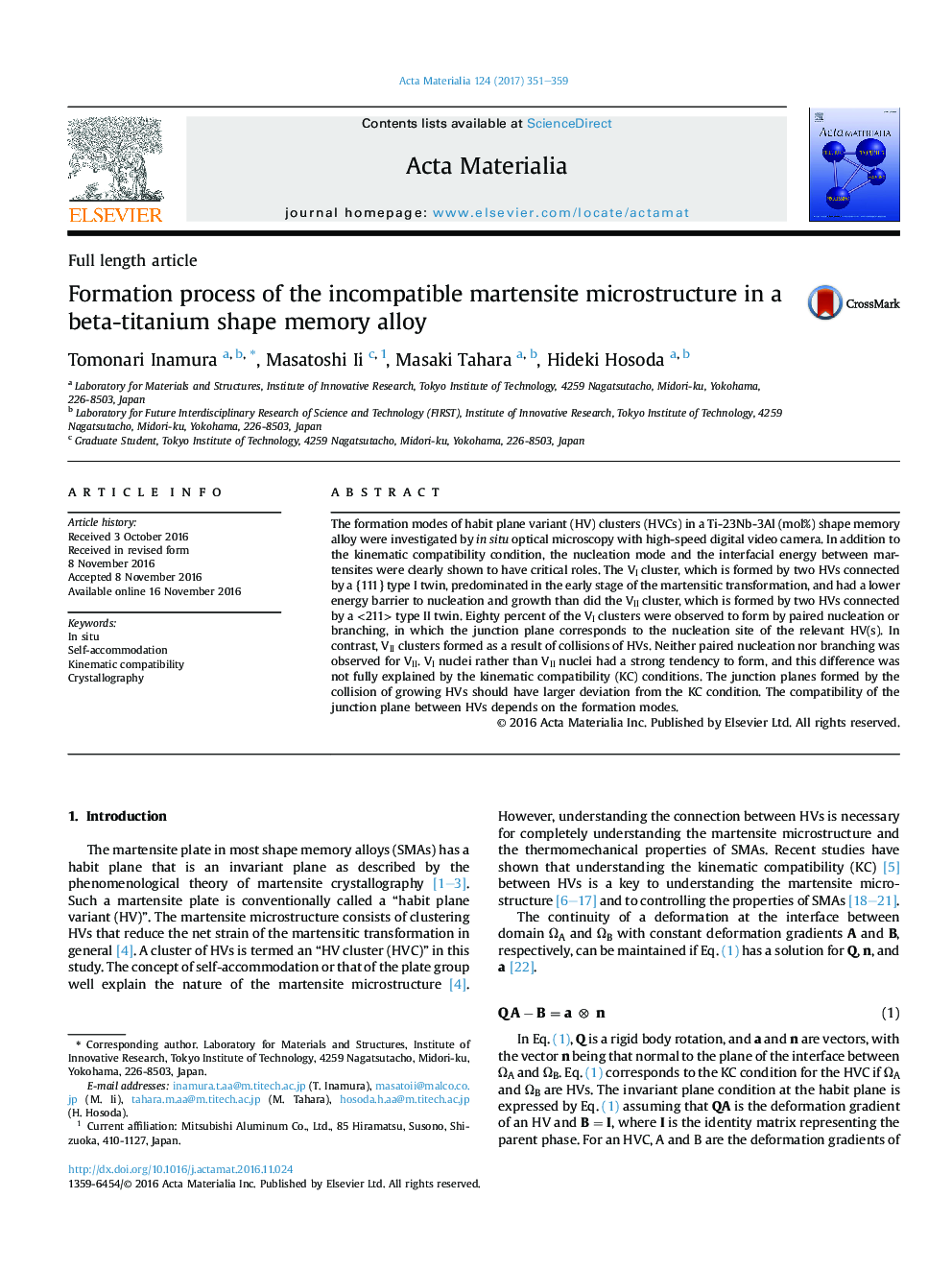| Article ID | Journal | Published Year | Pages | File Type |
|---|---|---|---|---|
| 5436455 | Acta Materialia | 2017 | 9 Pages |
The formation modes of habit plane variant (HV) clusters (HVCs) in a Ti-23Nb-3Al (mol%) shape memory alloy were investigated by in situ optical microscopy with high-speed digital video camera. In addition to the kinematic compatibility condition, the nucleation mode and the interfacial energy between martensites were clearly shown to have critical roles. The VI cluster, which is formed by two HVs connected by a {111} type I twin, predominated in the early stage of the martensitic transformation, and had a lower energy barrier to nucleation and growth than did the VII cluster, which is formed by two HVs connected by a <211> type II twin. Eighty percent of the VI clusters were observed to form by paired nucleation or branching, in which the junction plane corresponds to the nucleation site of the relevant HV(s). In contrast, VII clusters formed as a result of collisions of HVs. Neither paired nucleation nor branching was observed for VII. VI nuclei rather than VII nuclei had a strong tendency to form, and this difference was not fully explained by the kinematic compatibility (KC) conditions. The junction planes formed by the collision of growing HVs should have larger deviation from the KC condition. The compatibility of the junction plane between HVs depends on the formation modes.
Graphical abstractThe 80% of the VI cluster is formed by the paired nucleation or branching in which the junction plane corresponds to the nucleation site of the relevant HV(s). In contrast, VII cluster is originated to the collision of HVs. No paired nucleation and branching were observed for VII. There is a strong tendency to form VI rather than VII in the nucleation and is not fully explained by the evaluation of KC conditions.Download high-res image (389KB)Download full-size image
